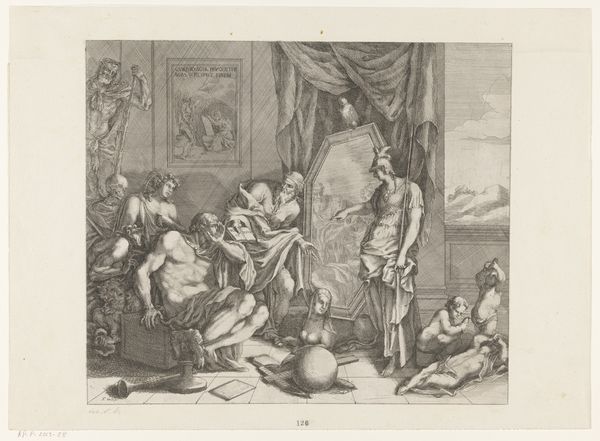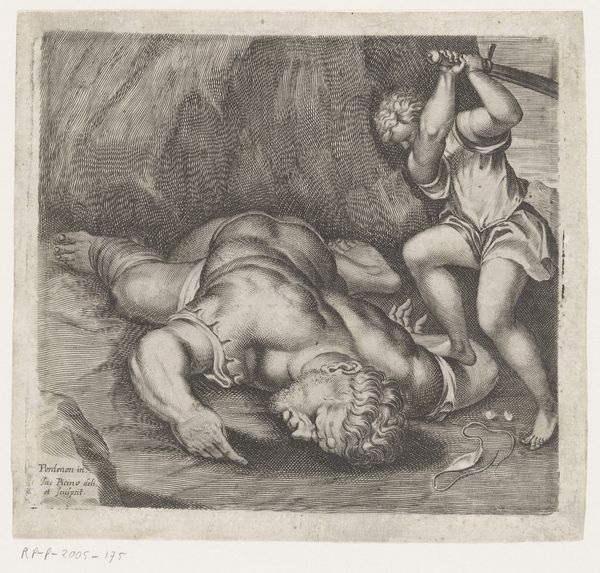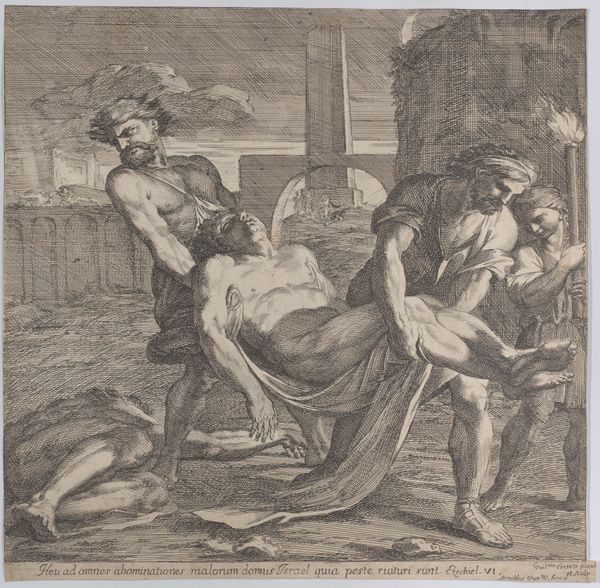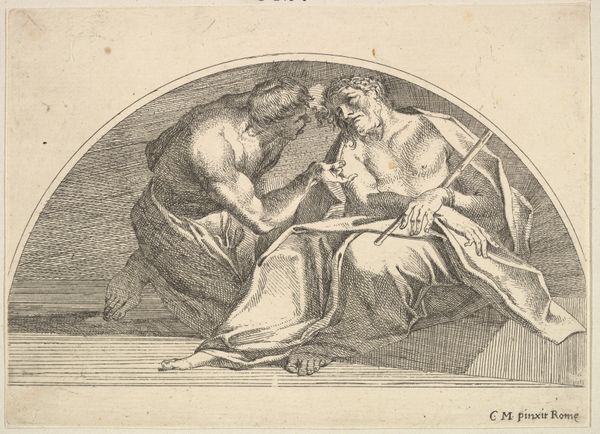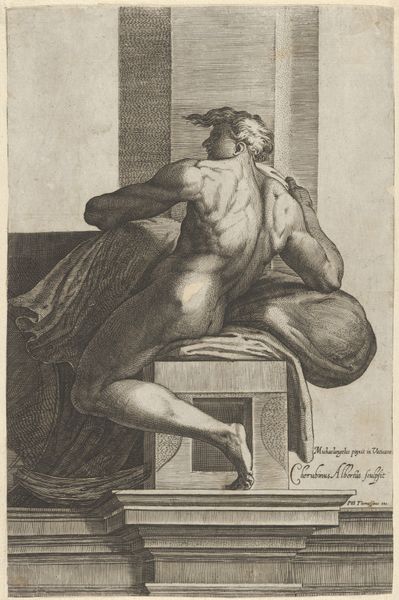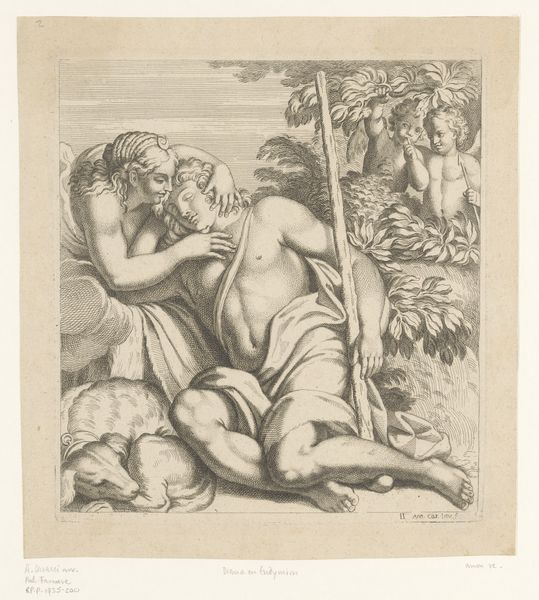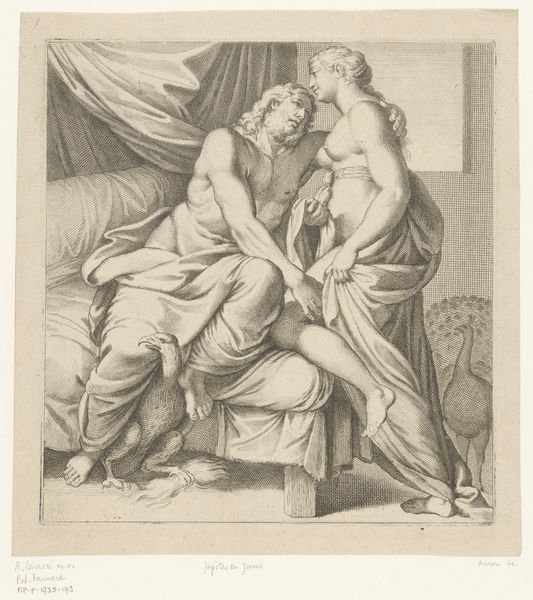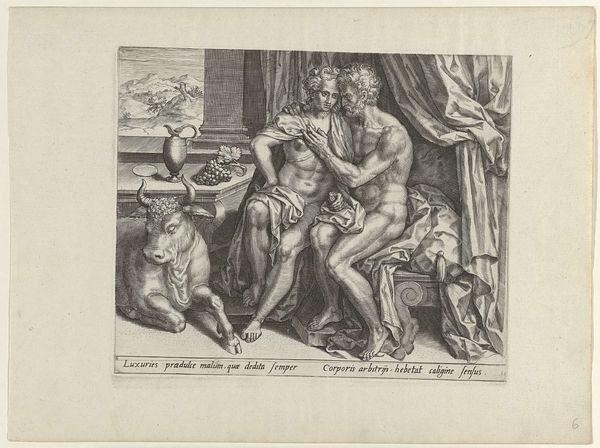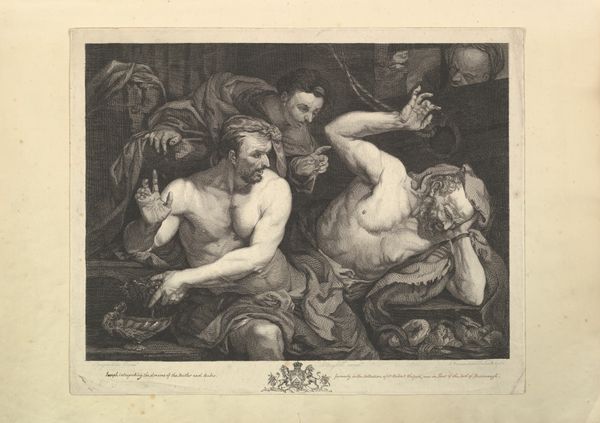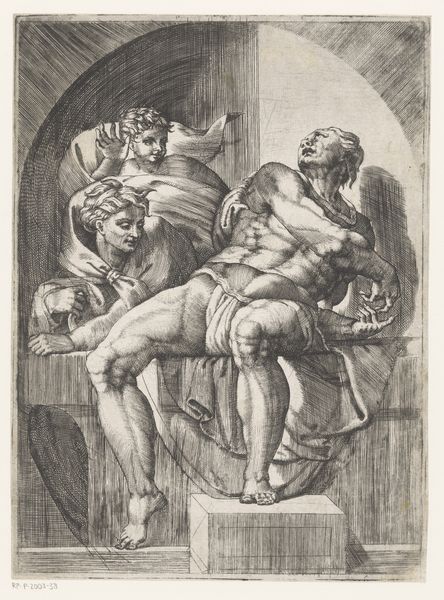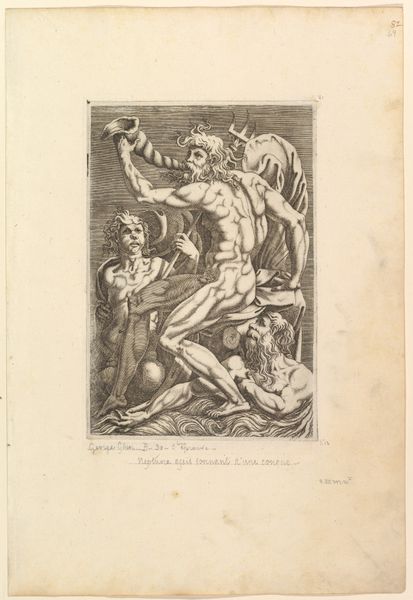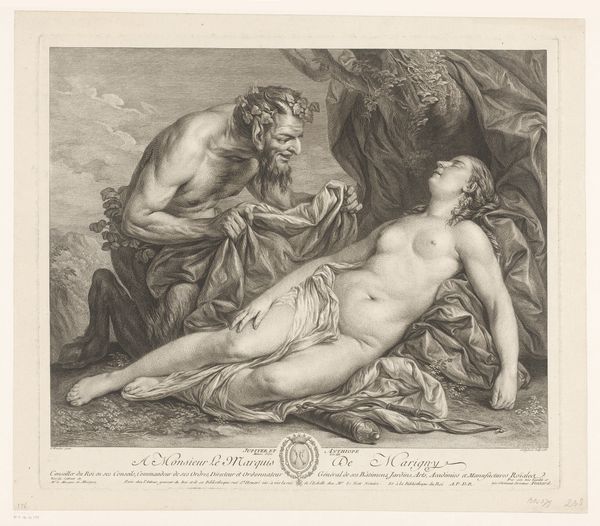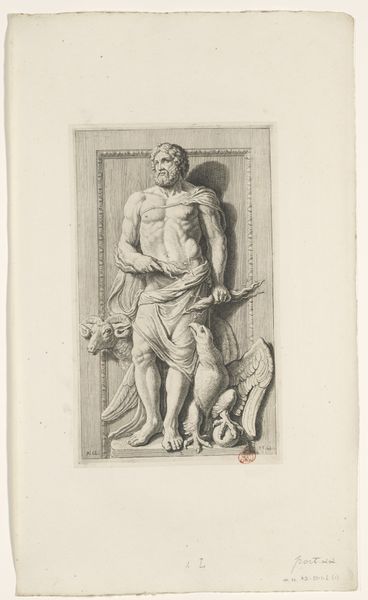
engraving
#
allegory
#
baroque
#
figuration
#
history-painting
#
nude
#
engraving
Dimensions: height 235 mm, width 219 mm
Copyright: Rijks Museum: Open Domain
Curator: This engraving is entitled "Venus en Anchises." It comes to us from sometime between 1570 and 1659, its creator remaining anonymous. It's part of the Rijksmuseum collection. Editor: It strikes me as quite formal, almost sculptural. The stark lines of the engraving give it a powerful, almost austere quality despite the classical subject matter. I'm drawn to the artist's use of light and shadow to define the forms. Curator: Looking at the engraving's materiality, it is intriguing to consider its production in the late 16th to mid-17th century. Engravings at that time involved highly skilled artisans. This wasn’t merely a mechanical reproduction process; it required a deep understanding of material properties and technical skill. It would be interesting to consider the economics around such work. Editor: Indeed. I also can't help but view it in its historical context. Depicting Venus and Anchises had implications; reflecting on the evolving views of mythology, nobility, and power during the 16th and 17th centuries is really a way of understanding societal structures and values that privileged certain narratives. Curator: And consider how many prints like this were made in multiples, distributed and sold to a bourgeois audience hungry for mythological scenes. It represents both a market and a display of status, doesn't it? Editor: Precisely. Museums have a way of altering the image through display as well, as our views can’t help but be mediated by the spaces of this historical print and the way that we encounter and contextualize it. The accessibility that reproductions offered cannot be understated; even today, prints facilitate public access to these images. Curator: So we have something that speaks of luxury while also being almost a form of early accessible art. I appreciate how delving into the materiality and labor truly shapes our reading of history here. Editor: Agreed. Seeing the work's public trajectory helps underscore just how deeply artworks can be ingrained in our shared visual and political cultures, across class and status, in different ways, of course.
Comments
No comments
Be the first to comment and join the conversation on the ultimate creative platform.

